Solar cooking will kill chicken bacteria effectively when you maintain proper temperatures and follow safety protocols. Your solar oven needs to reach at least 140°F for preheating and maintain 165°F or higher during cooking to eliminate harmful bacteria. You'll face challenges like fluctuating sunlight, cloud cover, and wind that can drop temperatures into the dangerous zone between 40°F and 140°F where bacteria thrive. Successful solar cooking requires constant temperature monitoring with a calibrated thermometer, proper positioning for maximum sun exposure, and regular adjustments. Understanding these critical factors will guarantee your solar-cooked chicken stays safe and bacteria-free.
Understanding Solar Cooking Temperature Basics
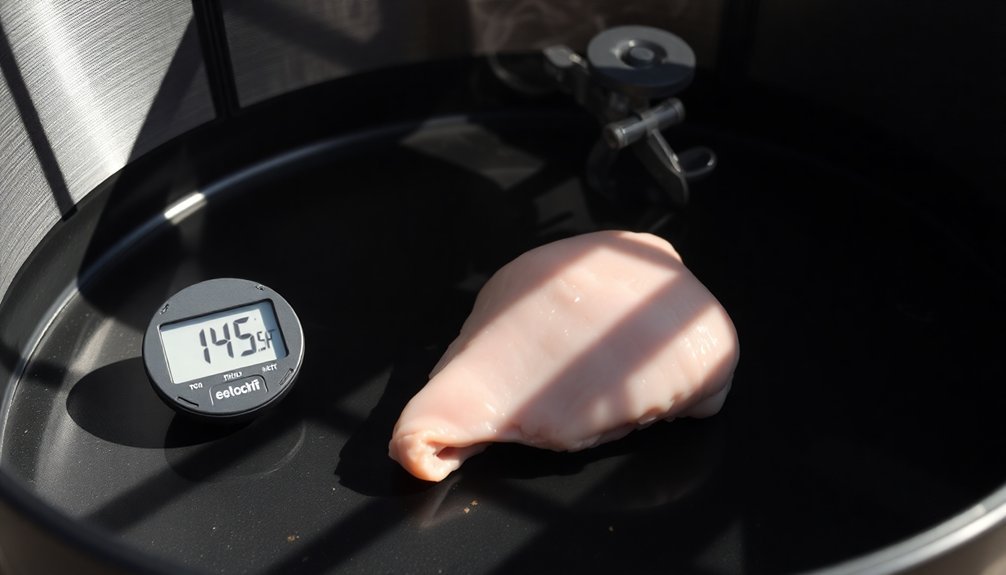
Understanding solar cooking temperatures is critical for safe food preparation. Different types of solar ovens reach varying temperature ranges, with box-style ovens hitting 160°F to 400°F and parabolic cookers reaching up to 800°F.
You'll find that panel cookers operate at more moderate temperatures between 200°F and 300°F. Early morning cooking should be avoided since it's not suitable for solar ovens.
You'll need to take into account several factors that affect your solar oven's performance. The time of day matters greatly, with peak cooking hours between 11:00 am and 3:00 pm.
Wind can drastically reduce internal temperatures, so you'll want a sheltered cooking spot. Your location also impacts cooking effectiveness – areas closer to the Equator receive more intense sunlight.
To maintain proper temperatures, you'll need to adjust your oven every 30 minutes to track the sun's movement and guarantee proper heat retention.
Common Solar Cooking Safety Mistakes
You're putting your health at risk when you don't regularly check your solar cooker's temperature with a reliable thermometer, especially since visual cues can be deceiving.
Your failure to maintain consistent heat levels between 140-200°F throughout the cooking process creates dangerous bacterial growth conditions.
Moving clouds, shifting sunlight, and poor positioning can drop temperatures into the danger zone without you even realizing it. Using dark-colored cookware helps maintain more consistent temperatures by maximizing heat absorption.
Poor Temperature Monitoring Methods
When it comes to solar cooking safety, poor temperature monitoring methods represent one of the most dangerous pitfalls.
You're putting yourself at risk if you're measuring air temperature instead of actual food temperature or using uncalibrated sensors that give false readings.
Without real-time monitoring through apps or data loggers, you can't track vital temperature fluctuations that determine whether bacteria are killed.
You'll miss dangerous cold spots if you're not checking different zones within your solar cooker.
Using incorrect thermometer placement or failing to pre-heat your cooker compounds these risks.
Don't rely on guesswork – you need proper data logging and analysis to guarantee safe cooking temperatures.
If you're not using appropriate temperature ranges for your thermometer or tracking solar angle calculations, you won't achieve the consistent heat needed to eliminate harmful bacteria.
Buffered probe sensors provide much more accurate temperature readings than measuring just the air temperature inside your solar oven.
Inconsistent Heat Maintenance Problems
Despite the allure of eco-friendly cooking, solar cookers face critical heat maintenance issues that can compromise food safety.
You'll struggle with inconsistent temperatures due to changing sunlight conditions, poor insulation, and moisture buildup. When cooking chicken, these fluctuations can create dangerous zones where bacteria thrive, as the cooker fails to maintain the steady heat needed to kill harmful microorganisms.
- Your food's safety is at risk every time clouds pass overhead, causing temperatures to plummet.
- You're constantly fighting against heat loss through inadequate insulation, especially on cold or windy days.
- Your cooking process is interrupted repeatedly to adjust the cooker's position with the sun.
- You're battling dangerous condensation that blocks sunlight and reduces cooking temperatures.
Essential Chicken Preparation Steps
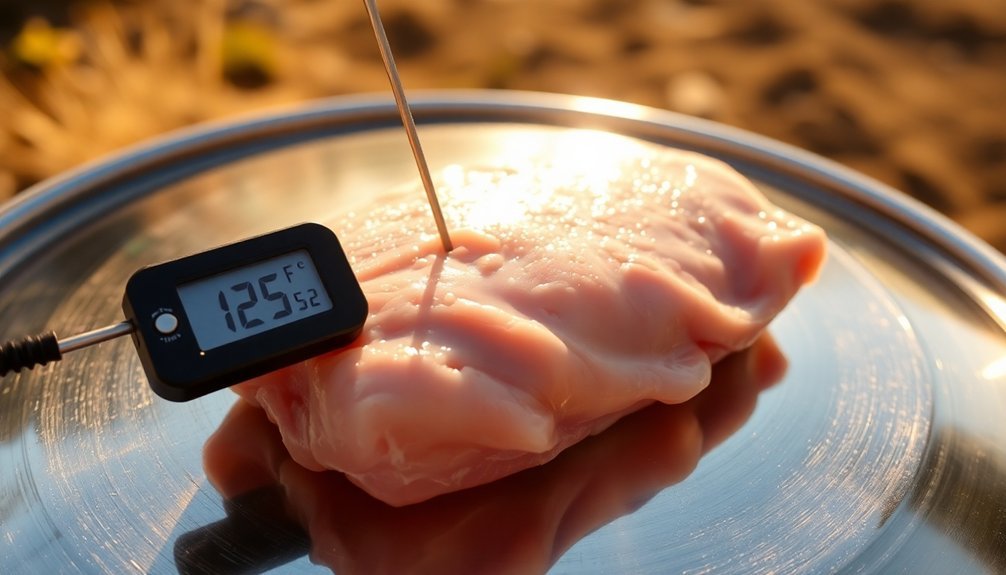
You'll need to handle raw chicken with extra caution by washing your hands thoroughly and sanitizing all surfaces it touches to prevent bacterial contamination.
A reliable meat thermometer is essential since you can't rely on visual cues alone to determine if harmful bacteria have been killed.
While solar cooking methods vary in effectiveness, maintaining proper food preparation standards and monitoring internal temperatures remains vital for food safety.
Clean and Handle Safely
Since raw chicken harbors potentially harmful bacteria, proper cleaning and handling procedures are essential for food safety.
You'll need to dedicate specific cutting boards and utensils for raw chicken, and never reuse them until they're thoroughly sanitized.
Don't wash raw chicken, as this spreads bacteria; instead, pat it dry if needed.
Store it on your fridge's bottom shelf in covered containers to prevent cross-contamination.
- You wouldn't want your family to get sick from preventable bacterial contamination
- Your kitchen should be a place of nourishment, not foodborne illness
- Think of sanitizing as your shield against dangerous pathogens
- Imagine the peace of mind knowing you're protecting your loved ones
Always wash your hands, utensils, and surfaces with hot, soapy water for 20 seconds before and after handling raw chicken, and use antibacterial sanitizers on all contacted surfaces.
Monitor Temperature Closely
When preparing chicken in a solar oven, monitoring the internal temperature becomes your most critical safety task.
You'll need to verify the meat reaches 165°F (74°C) to kill harmful bacteria like Salmonella and Campylobacter.
Insert your thermometer into the thickest part of the chicken, avoiding bones and fat. Since solar ovens cook at lower temperatures around 250°F (121°C), you'll need to check frequently and adjust the reflector angle as the sun moves.
Don't rely on visual cues alone – while solar-cooked chicken may not brown like traditional methods, it's safe to eat once it maintains the proper internal temperature.
Use oven bags or glass covers to trap heat effectively, and don't be concerned if cooking takes several hours.
The low, steady heat won't dry out your chicken but will still eliminate bacteria when properly monitored.
Proper Temperature Monitoring Methods
Proper temperature monitoring is vital for safe solar cooking and requires reliable digital tools to track heat levels accurately. You'll need a digital probe thermometer that can measure temperatures from -50°C to 300°C, like the Solar Brother model.
Modern thermocouples and smart sensors can send real-time updates to your mobile device, helping you track food safety throughout the cooking process.
- Don't risk your family's health by guessing temperatures – bacteria can thrive in the danger zone between 50°F and 125°F
- You're playing with fire if you don't monitor internal meat temperatures – 165°F is critical for safe chicken
- Your loved ones deserve the security of knowing their food is properly cooked
- Be the responsible cook who always uses data, not intuition, to guarantee food safety
Weather Impact on Cooking Times
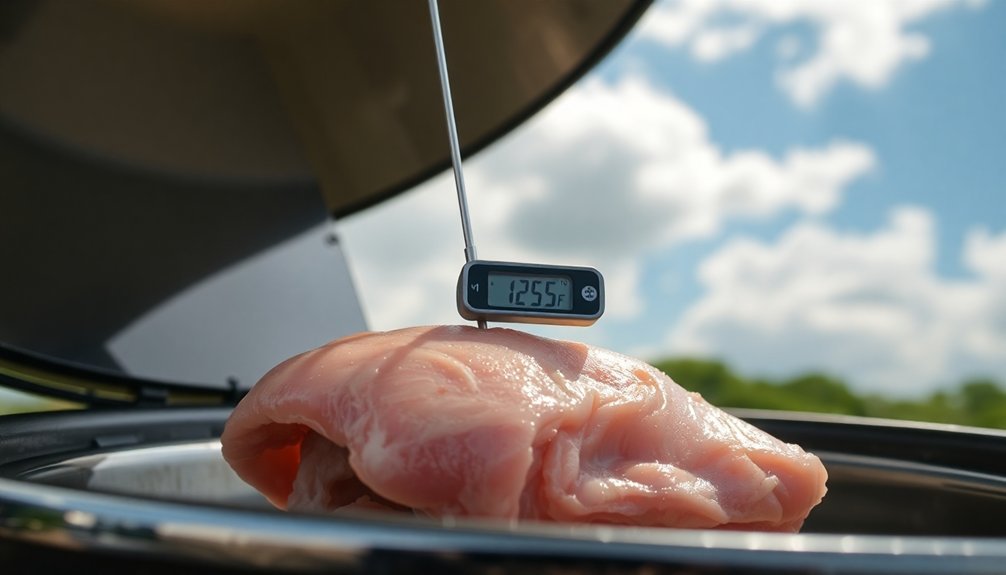
Understanding weather's impact on solar cooking times can mean the difference between a safe meal and undercooked food.
When you're cooking chicken in a solar oven, you'll need to account for various weather conditions that can affect cooking duration.
Cloud cover, even if light, will extend your cooking time as it reduces the oven's temperature. You'll want to find a wind-protected spot since breezes can steal heat from your oven.
Remember that your prime cooking window is between 11:00 am and 3:00 pm, but this narrows during fall, winter, and spring.
If you live in southern regions like Arizona or Texas, you'll have more consistent cooking conditions year-round.
However, if you're in cloudier areas like Oregon or coastal regions, you'll face more limitations and longer cooking times.
Safe Solar Cooking Best Practices
Safe solar cooking depends on maintaining consistent temperatures and following proven safety protocols.
You'll need to preheat your solar oven to at least 140°F, but ideally 200°F, before adding food. Keep a cooking thermometer handy to verify that meats and poultry reach 165°F internally.
Don't let food linger in the danger zone between 40°F and 140°F for more than 2-4 hours, as bacteria multiply rapidly in this range.
- Your family's health is at stake – never skip temperature checks
- Don't risk serving undercooked chicken to your loved ones
- Protect your children from foodborne illness by following proper times
- Take pride in serving safely cooked meals from your solar oven
Remember to stir liquids and rotate solid foods every 10-15 minutes for even cooking, and always position your oven to maintain direct sunlight exposure throughout the cooking process.
Frequently Asked Questions
Can You Use Aluminum Foil Instead of Dark-Colored Pots for Solar Cooking?
You can use aluminum foil in solar cooking, but it's not ideal for pots since it reflects heat rather than absorbing it. You'll get better results using dark-colored pots with foil as reflective panels instead.
Does Marinating Chicken Affect the Time Needed to Kill Bacteria?
While marinating can reduce bacterial levels, it won't shorten your cooking time. You'll still need to cook your chicken to 165°F (75°C) to guarantee all bacteria are killed, regardless of marination time.
What Happens if Clouds Appear Halfway Through Cooking Chicken?
If clouds appear midway through cooking, you'll lose consistent heat needed to kill bacteria. You should switch to conventional cooking methods immediately, as intermittent temperatures won't effectively eliminate harmful bacteria in your chicken.
Can Bacterial Resistance Develop From Incomplete Solar Cooking Cycles?
No, you won't create bacterial resistance through incomplete solar cooking. While bacteria might survive insufficient heating, this doesn't cause resistance development. However, you'll still risk food poisoning from surviving bacteria.
How Does Altitude Affect Solar Cooking Temperatures and Bacteria Elimination?
At higher altitudes, you'll experience increased UV intensity and better radiation concentration, helping you reach higher cooking temperatures. This means you'll kill bacteria more effectively, especially when temperatures exceed 65°C (150°F).
In Summary
You'll need to monitor your solar cooker closely to guarantee it reaches and maintains the necessary 165°F (74°C) to kill harmful bacteria in chicken. Don't rely on sunny weather alone – use a proper thermometer and follow safe food handling practices. If you can't confirm the correct temperature or cooking conditions aren't ideal, switch to conventional cooking methods to avoid foodborne illness.
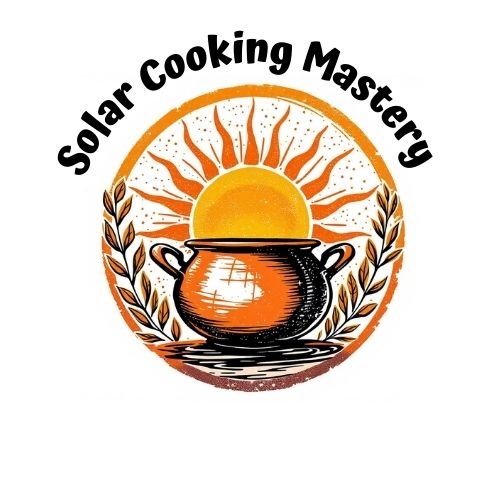

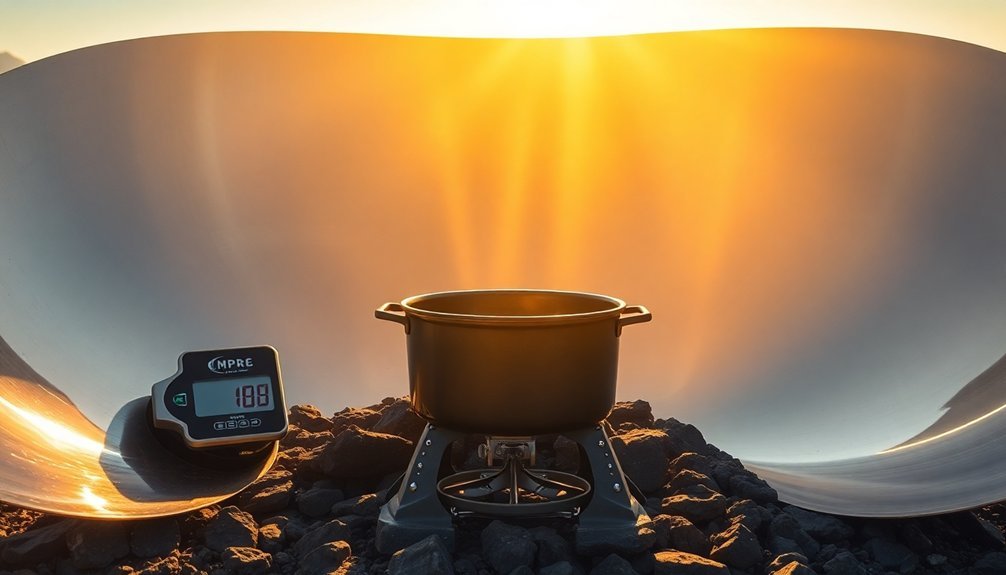
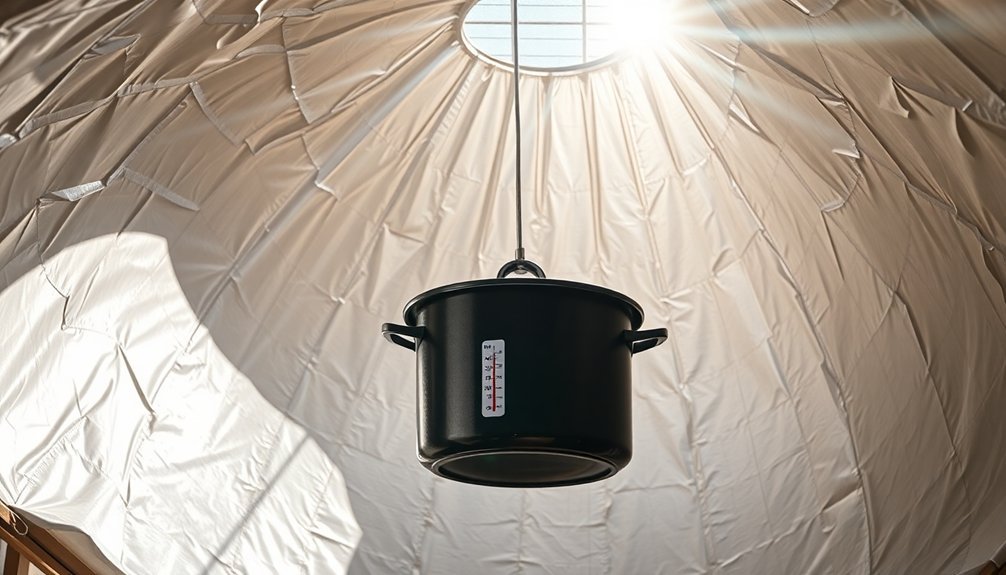
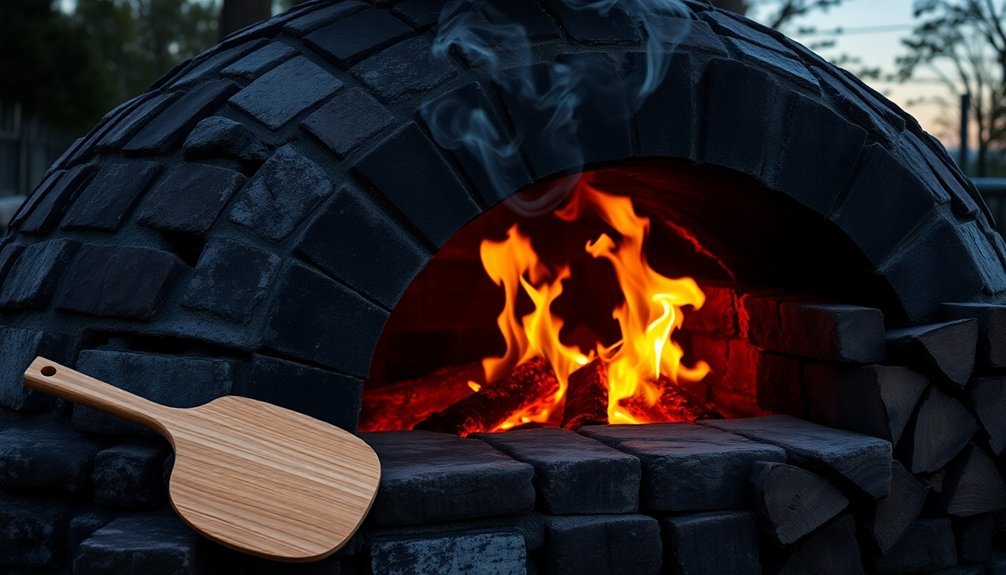
Leave a Reply